Speaker
Description
Fungal spores are considered some of the most important aeroallergens, triggering allergenic symptoms and further exacerbating existing respiratory conditions. Predicting periods when ambient concentrations of allergenic fungal spores will be high, represents an important resource for allergy sufferers and those suffering from respiratory conditions such as asthma. Aerobiological surveys have reported Alternaria and Cladosporium are two of the most prevalent airborne fungal spores and are important aeroallergens. The main goal of this study was to analyse the airborne concentrations of Cladosporium and Alternaria at a number of sites in Ireland and construct a model to predict the concentrations.
The ambient monitoring was carried out between the years 2017 to 2021 in Dublin and from March to August 2021 in Sligo, Carlow and Cork. Fungal spore monitoring was conducted via Hist-type spore traps in each of the locations following the recommendations of the European Aerobiological Society.
Two different types of models were constructed, classification models and regression models. Two methods of classification models were developed, Random Forest (RF) and support vector machine (SVM) models. A 3 level concentration classification was used for Alternaria (<10, 10-99 and >100 fungal spores/m3) while a two-level concentration break up to differentiate between high and low was used for Cladosporium (<500 and >500 fungal spores/m3). With regard to the regression type models used, Least Trimmed Squares Robust Regression (Robust Model), Generalized Linear Ensembled (Ensemble Model) and Generalized Additive Models (GAM Model) were developed. Dublin monitoring data was used for model training while validation of the models was done with data obtained from Sligo, Cork and Carlow.
Overall, the SVM models showed a greater accuracy when applying the developed Alternaria models to the data collected from the Cork and Sligo sampling sites, with model accuracy exceeding 60% and 75% accuracy, respectively. The Random Forest models, on the other hand, performed best for the Carlow sampling site with model accuracy exceeding 60%.
Moving to the modelling of Cladosporium at the sites, the developed SVM model performed best for both Carlow and Sligo, yielding model accuracies of greater than 75% and 40%. Whereas the random forest model performed best for Cork with model accuracy results exceeding 60%.
The robust model performed best for Alternaria prediction in Carlow, whereas the ensemble model achieved the best results for Alternaria prediction in Cork and Sligo. Overall, models were less accurate in predicting Cladosporium concentrations, especially for Carlow. On the other hand, the robust model and GAM model performed best for Cladosporium prediction in Cork and Sligo, respectively.
Any notable deviations observed between predicted and expected values can be explained due to deviations introduced by applying the models to different sampling locations. As these sites likely experience different changes in environmental factors. In addition, at this early stage in model development, it is expected that periods of extreme deviations in spore concentration will not be accurately predicted by the developed models using the available training data alone. The use of classification models for current Alternaria and Cladosporium forecasting is advised rather than the use of regression models.
This is due to the improved accuracy experienced when broader concentration levels are predicted over specific numerical values. As monitoring efforts continue to grow and expand, the incorporation of additional data will greatly improve model performance and accuracy in the future. Increased monitoring will also provide an opportunity to develop location-specific models for the other sampling locations and spore types.

